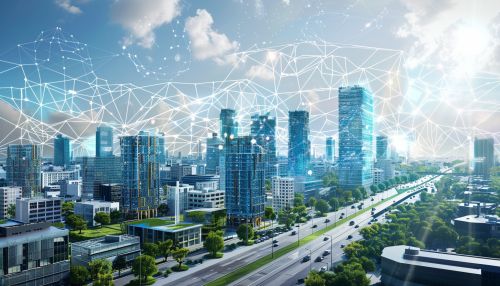Smart Cities
Introduction
A Smart City is an urban area that uses different types of electronic methods and sensors to collect data. Insights gained from that data are used to manage assets, resources and services efficiently; in return, that data is used to improve the operations across the city. This includes data collected from citizens, devices, buildings and assets that is then processed and analyzed to monitor and manage traffic and transportation systems, power plants, utilities, water supply networks, waste, crime detection, information systems, schools, libraries, hospitals, and other community services.


History and Evolution
The concept of a smart city has been introduced with the rise of Information and Communication Technologies (ICT) and the need for more sustainable and efficient urban living in response to the ongoing urbanization and population growth. The idea of smart cities originated in the 1990s when the Internet of Things (IoT) was still in its infancy. The term "smart city" was coined by IBM as part of their Smarter Planet initiative.
Key Components
Smart cities use a variety of key components to integrate information and communication technology and various physical devices connected to the IoT network to optimize the efficiency of city operations and services and connect to citizens. These components include:
- Big Data: The massive volume of data generated by cities can be processed and analyzed to improve infrastructure, public utilities, services, and more.
- Internet of Things (IoT): IoT devices and sensors collect data from the city environment, including traffic, weather conditions, energy usage, and more.
- Cloud Computing: Cloud technology allows cities to scale resources up and down as needed and enables quick and efficient data analysis.
- Cyber-Physical Systems (CPS): These systems involve a tight confluence of computation, networking, and physical processes. Embedded computers and networks monitor and control the physical processes, usually with feedback loops where physical processes affect computations and vice versa.
Implementation and Challenges
Implementing a smart city concept involves significant challenges. It requires a comprehensive and integrated approach that ensures citizens' involvement and uses a multitude of technological, organizational, and policy innovations. The challenges include cybersecurity concerns, the need for data governance, privacy issues, and the need for investment in new types of infrastructure.
Future of Smart Cities
The future of smart cities is promising, with advancements in technology and an increasing understanding of the importance of improving urban life. With the rise of Artificial Intelligence (AI) and machine learning, cities will become more adaptive and efficient. The integration of AI with IoT will lead to more effective data analysis and decision-making processes, leading to better urban planning and management.
